December's Visual Primary Source for the History Classroom
Activities for the History Classroom
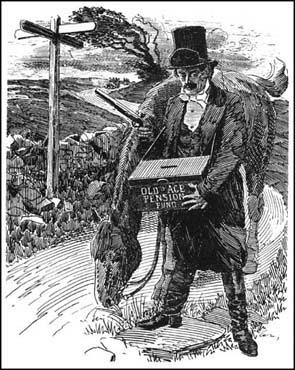
Question: The Conservative Party, the House of Lords, and right-wing newspapers and magazines were opposed to the introduction of Old Age Pensions. The cartoon above shows David Lloyd George, the Chancellor of the Exchequer, as a highwayman. What point is Linley Sambourne making in his cartoon?
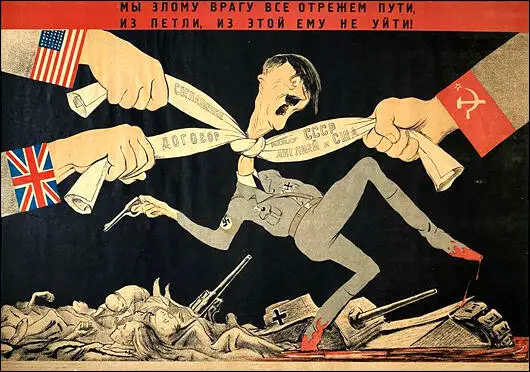
Question: Mikhail Kupriyanov, Porfiry Krylov and Nikolai Sokolov were all students of the famous Russian artist, Dmitri Orlov. In 1924 they established their own studio in Moscow. It was decided to sign their work Kukryniksy (an anagram of parts of their names). During the Second World War the group concentrated on producing propaganda posters. What was the message of the poster above?
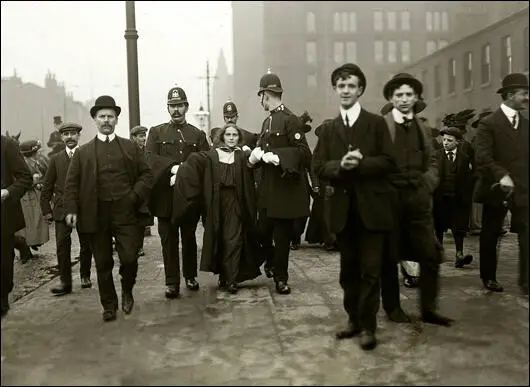
Question: Dora Marsden was arrested on 30th March 1909, for protesting about the way members of the Women's Social and Political Union (WSPU) were being treated in prison, at a meeting where a member of the Liberal government (Lord Morley) was speaking. Why was Marsden wearing a university gown?
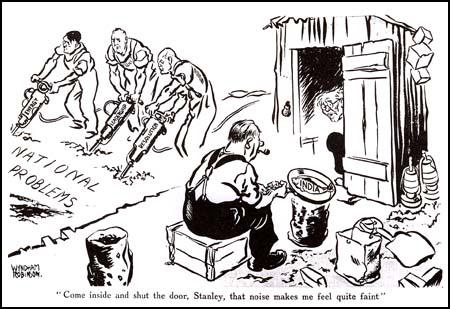
Question: The cartoon shows Ramsay MacDonald, the British prime minister in a shed. Stanley Baldwin, the leader of the Conservative Party, and a member of the coaltion government, cooking on an open fire. What is Wyndham Robinson saying about the way MacDonald and Baldwin are running the country?
Question: Explain what John Leech is saying about capitalism.
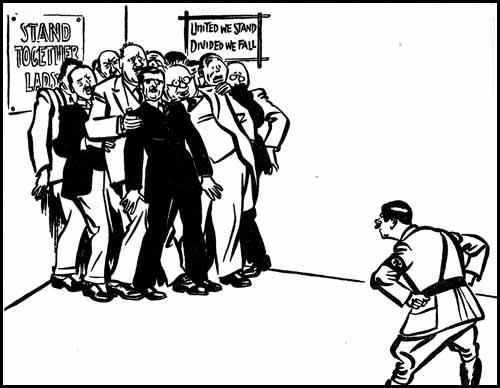
say, twenty-five years?", Evening Standard (12th March, 1936)
Question: Use the date of the cartoon to explain what David Low is saying in the cartoon. It might help you to read this page on Appeasement.
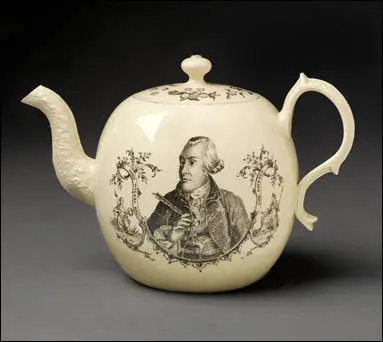
Question: Read about John Wilkes and then explain why Josiah Wedgwood made this tea-pot in 1770.
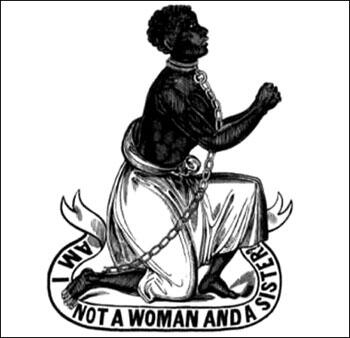
Question: Josiah Wedgwood had asked one of his craftsmen to design a seal for stamping the wax used to close envelopes. It showed a kneeling African in chains, lifting his hands and included the words: "Am I Not a Man and a Brother?" This image was "reproduced everywhere from books and leaflets to snuffboxes and cufflinks". Men displayed them as shirt pins and coat buttons. Whereas women used the image in bracelets, brooches and ornamental hairpins. In this way, women could show their anti-slavery opinions at a time when they were denied the vote
Sophia Sturge, a member of the Female Society for Birmingham group, was responsible for designing a new Slave Emancipation Medallion, "Am I Not a Slave and a Sister?" What did Benjamin Franklin mean when he said a good image was "equal to that of the best written pamphlet".
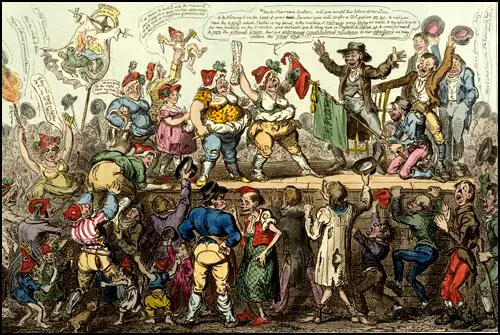
Question: In June 1819 the first Female Union was formed by Alice Kitchen in Blackburn. Later that year there were Female Reform Groups in Manchester, Oldham and Royton. The artist, George Cruikshank, was a supporter of male suffrage. Do you think that he was a supporter of female suffrage. Explain your answer.
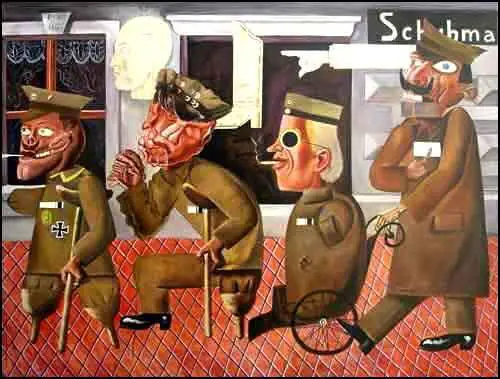
Question: Why did Otto Dix's paintings cause great controversy in the 1920s in Germany. Why did Adolf Hitler insist that Dix should be sacked as professor at the Dresden School of Arts and Crafts in 1934?
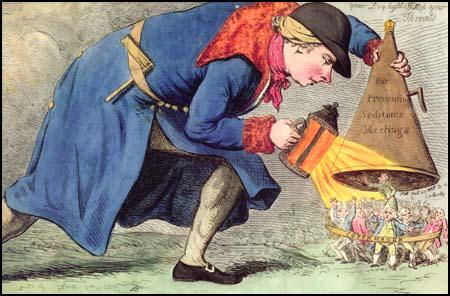
Question: The man in the cartoon is William Pitt the prime minister and is a comment on the Treason & Sedition Bill (1795). Why does he call the cartoon "The Royal Extinguisher"?
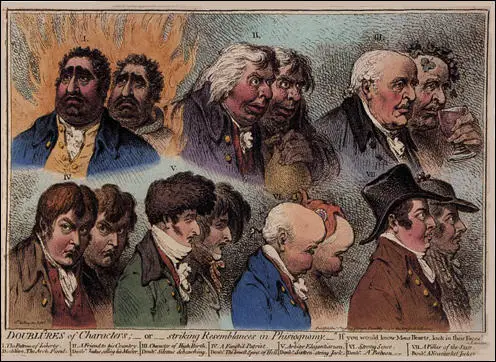
including Charles Fox, Sir Francis Burdett, Richard Brinsley Sheridan and George Tierney.
Question: Is James Gillray a supporter or opponent of the Whig Party?
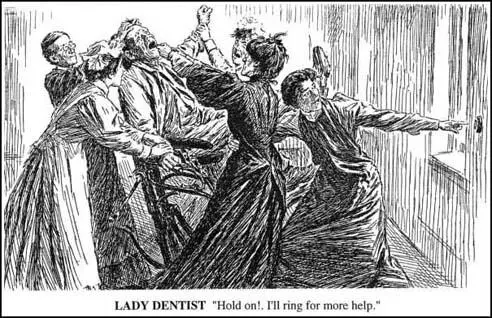
Question: In the 19th century upper class and middle class women were not expected to earn their own living. Women rarely had careers and most professions refused entry to women. In the middle of the 19th century it was virtually impossible for women to become doctors, engineers, architects, accountants or bankers. After a long struggle the medical profession allowed women to become doctors. Even so, by 1900 there were only 200 women doctors. It was not until 1910 that women were allowed to become accountants and bankers. However, there were still no women diplomats, barristers or judges. How does this cartoon attempt to persuade its readers that women did not make good dentists? It will help you to read this article on Careers and Women.
Philip Zec, The Daily Mirror (5th March, 1942)
Question: On 5th March, 1942, the Daily Mirror published a cartoon on the government's decision to increase the price of petrol. Philip Zec said the purpose of the cartoon was to make people aware that every drop of petrol was precious. Zec was trying to say that lives were being lost bringing tankers to Britain and that wastage was thus immoral." Winston Churchill was furious that the cartoon had been published and Herbert Morrison, the Home Secretary, called it a "wicked cartoon". The government even considered prosecuting Zec under 1940 Defence Regulation 2A ("If, with intent to assist the enemy, any person does any act which is likely to assist the enemy or to prejudice the public safety, the defence of the realm or the efficient prosecution of the war, he shall be liable to penal servitude for life.") Why do you think the government was so hostile to Zec's cartoon? Why did they eventually decide not to prosecute Philip Zec and the Daily Mirror?

